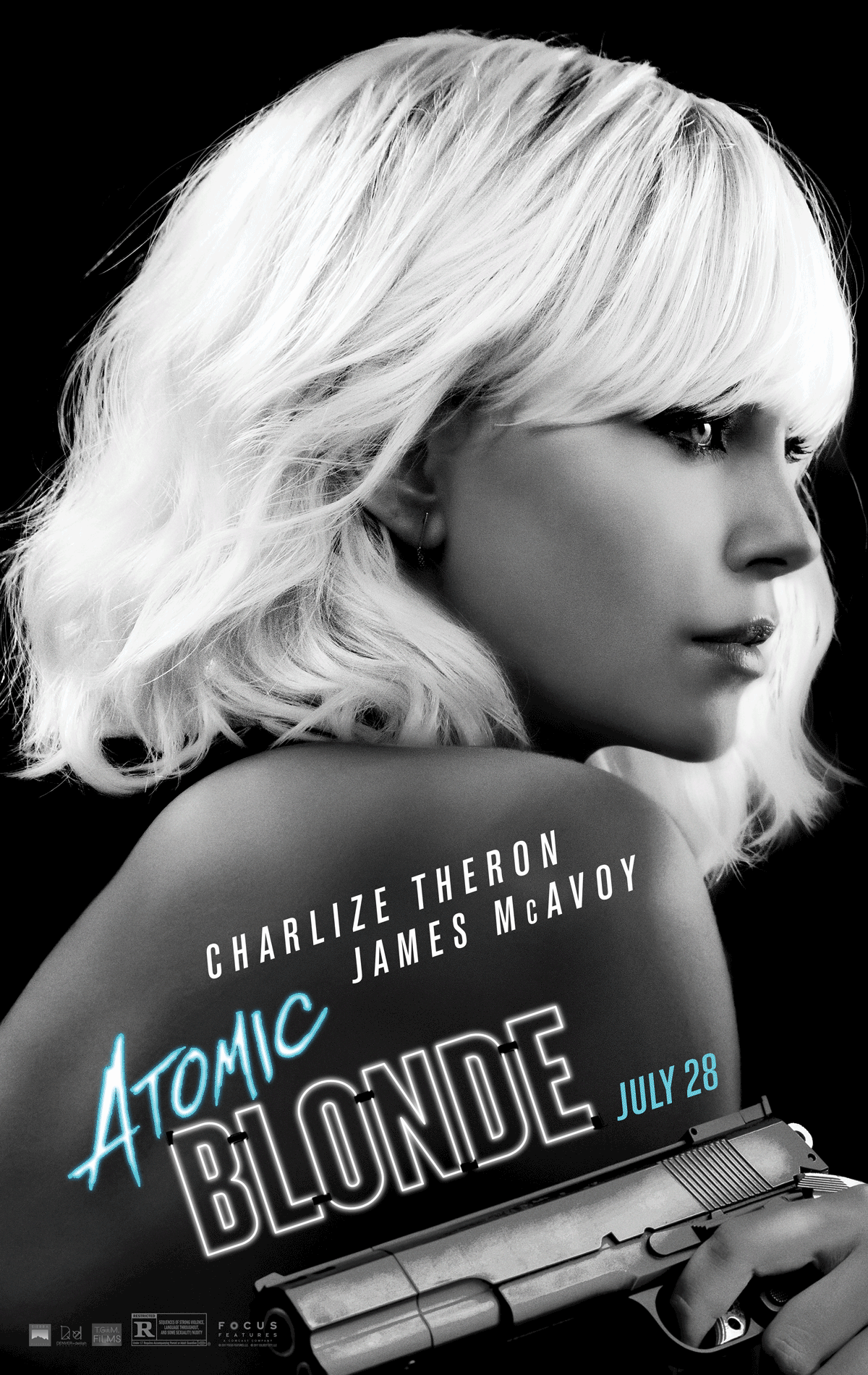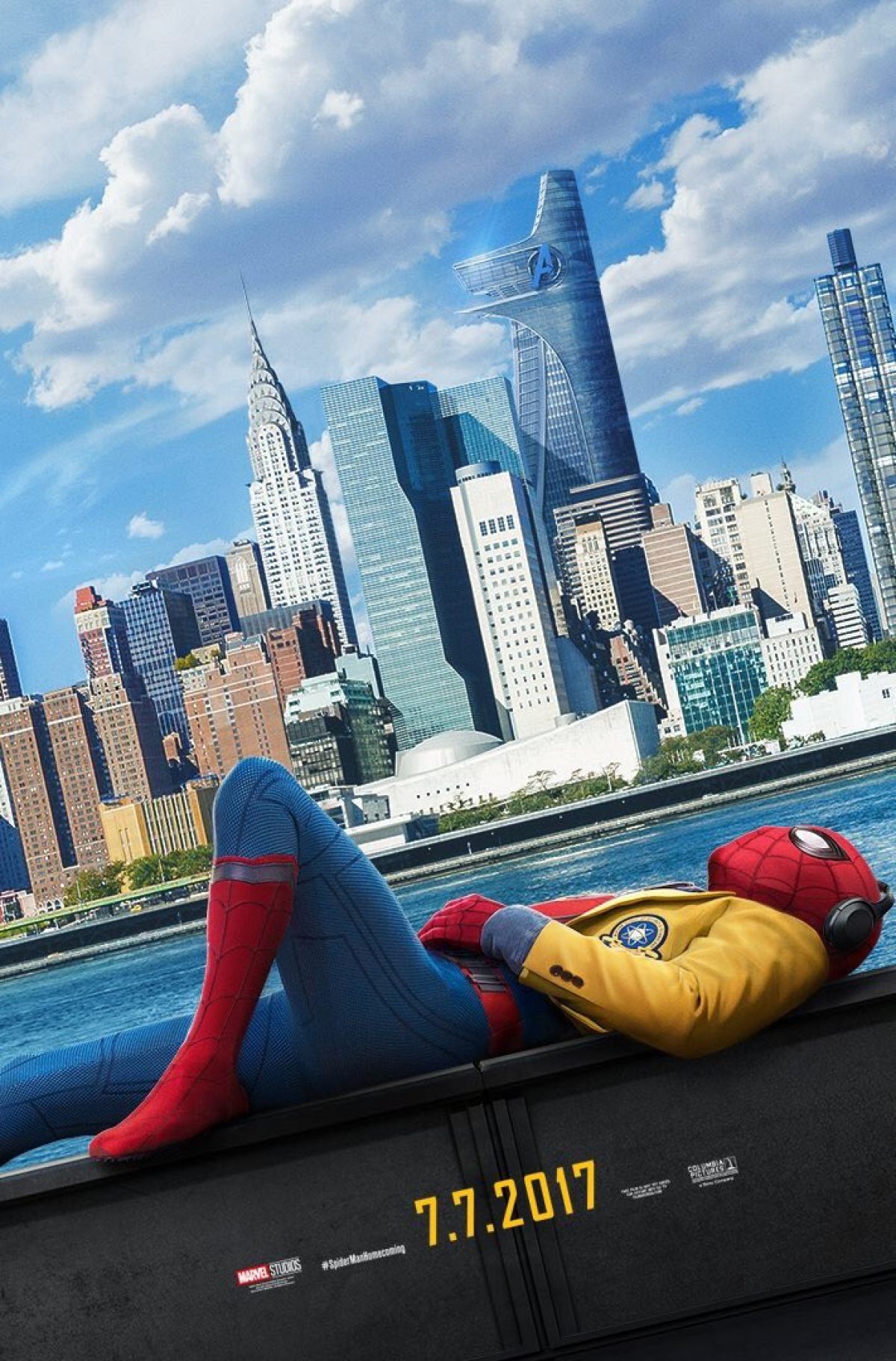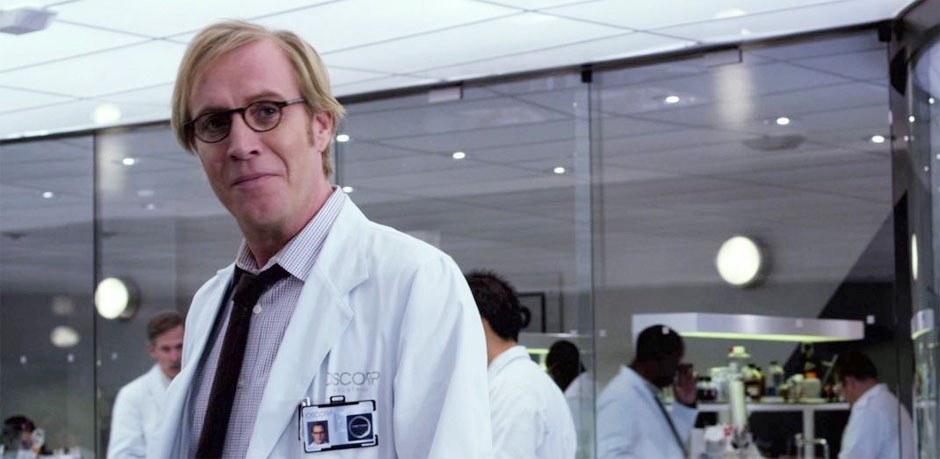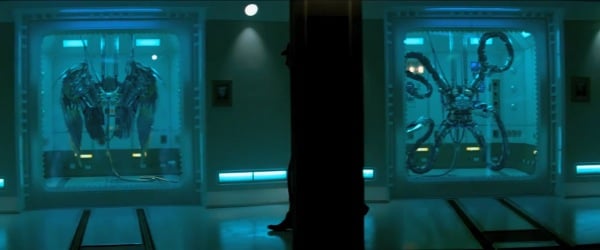Well, we’re now halfway through 2017, and for those who have been following this blog for a few years now, you know exactly what that means. Yes, today I’m looking back at these past six months of the year, recounting every film that I’ve seen during that time, and ultimately ranking them from worst to best. And unlike previous years where I didn’t keep much track of everything that I saw, the film fan website Letterboxd has allowed me to keep a ‘diary’ of the films that I’ve seen, thereby making these posts easier to assemble. And, overall, I’d say that this year has been quite excellent in terms of its new releases. Sure, there will always be those out there who will say otherwise (hopefully, in a few months, we won’t have another situation like last year where the entire internet expresses disappointment over this year’s summer slate) but, as usual, there has been a great variety of films from multiple genres to appeal to all age groups. Though, of course, there have also been a few notable ‘stinkers’ that I’ve seen this year, as there always is. However, for now, at least, I’ve found that the ‘worst’ films that I’ve seen this year so far have been more ‘disappointing’ than ‘anger-inducing’. After all, as I’ve made it clear in the past, I rarely get angry at films anymore because I find it to be rather pointless in a time where I feel that film fan culture is starting to get more nitpicky and negative due to overly heightened expectations. I mean, the internet does have this tendency to focus more on the ‘bad stuff’ than it does with the ‘good stuff’… and, simply put, that’s just not what I’m about as a film fan. Thus, with that in mind, here is my annual Midyear Recap of every film that I’ve seen so far in 2017, starting with my worst of the year and culminating with my current Top 5.
Also, just as a quick warning, there may be a few spoilers ahead for some of these films.
WORST FILM OF THE YEAR (SO FAR)
BAYWATCH
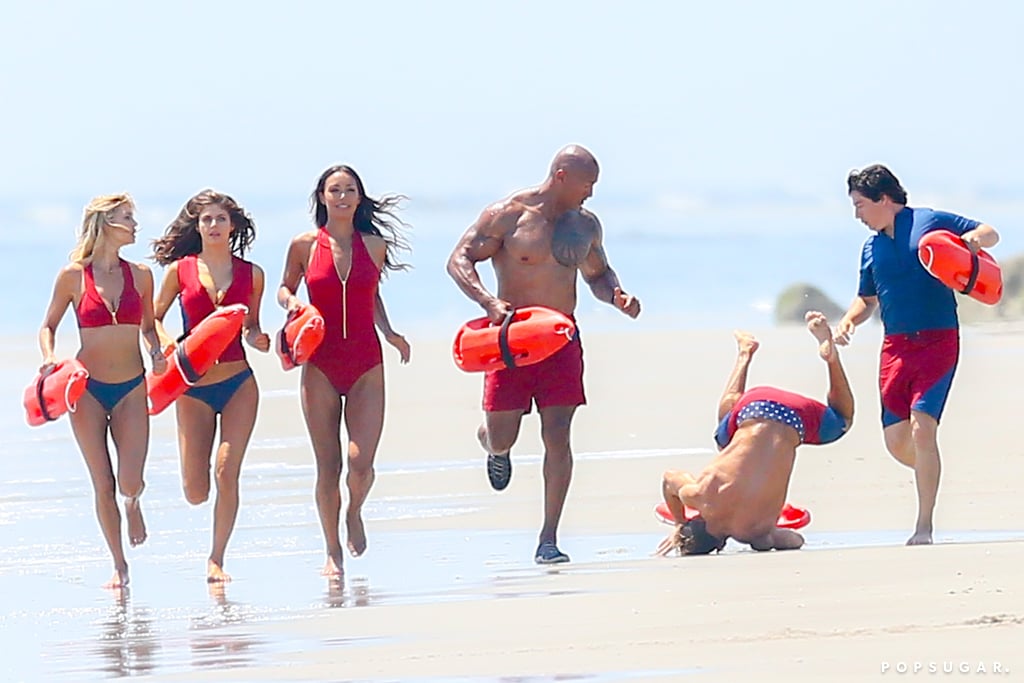
While I had never watched an episode of Baywatch before seeing it, it seemed like this year’s R-rated film adaptation of the cult TV series was shaping up to be the big comedy hit of the summer, especially given all the marketing that went into it. Sadly, it ended up being the complete opposite; in other words, Baywatch was a colossal dud. Its talented cast, which included the likes of Dwayne ‘The Rock’ Johnson, Zac Efron, and Priyanka Chopra, was ultimately stranded with a mediocre script that failed to produce any major laughs. From what I’ve read, the show took a more serious approach by comparison. At the same time, though, nowadays the show is regarded as being overly cheesy; thus, there legitimately was some potential for some good humor that poked fun at the show’s goofier elements (e.g. its iconic motif of lifeguards running in slow motion). However, this film ends up having one of the worst hit-miss ratios that I’ve ever seen out of a comedy, producing only a few chuckle-worthy moments and not a single laugh-out-loud moment. And it’s sad because many of the people involved in this have done better in other films, especially comedies. Zac Efron, of course, has been a stand-out in the Neighbors films while Dwayne ‘The Rock’ Johnson is one of the most charismatic actors in the business. But even with their solid on-screen camaraderie, their best efforts do nothing to save this film. As such, this new adaptation of Baywatch does quite a piss-poor job of representing its source material. I mean, I probably will watch a few episodes of the original show someday, but if you’re like me and you went into this film having never watched Baywatch before, this does not portray it in a positive light.
OTHER NOTABLE ‘STOINKERS’
(For those unaware, the term ‘Stoinker’ is a homage to Schmoes Know host Kristian Harloff, who often uses the phrase ‘It Stoinks!’ to describe bad films.)
THE CIRCLE

Despite the best efforts of a talented and impressively stacked ensemble cast, director James Ponsoldt’s adaptation of Dave Eggers’ best-selling novel from 2013 felt like a severely watered-down version of its source material. Granted, I haven’t read it at the time that I’m writing this but from what I’ve read about it online, the film clearly cuts out some of the darker elements of the story. This ranges from a plotline in which main character Mae’s (Emma Watson) best friend Annie (Karen Gillan) suffers some serious emotional trauma due to some unearthed family history to the ultimate characterization of Mae herself, who goes down a more sinister path by the story’s end to tie everything back to its themes regarding the dangers of technology. And while I don’t mind the idea of toning these plot elements down to make the film more appealing to audiences, it ultimately feels like there’s not much at stake here. The whole plotline in which Mae and Circle co-founder Ty (a severely underused John Boyega) try to prevent their superiors from misusing employee information doesn’t amount to much. Plus, the film doesn’t do much to make its supposed ‘main villains’, Circle CEOs Eamon Bailey and Tom Stenton, seem like sinister antagonists. I mean, for one thing, it doesn’t help that likable actors like Tom Hanks and Patton Oswalt were cast in these roles, to begin with. Ultimately, though, the overall truncation of the source material is what hurts The Circle the most, as any chances of it being an engaging and even timely technological thriller are wasted in what ultimately becomes a rather dull affair. On that note…
THE MUMMY
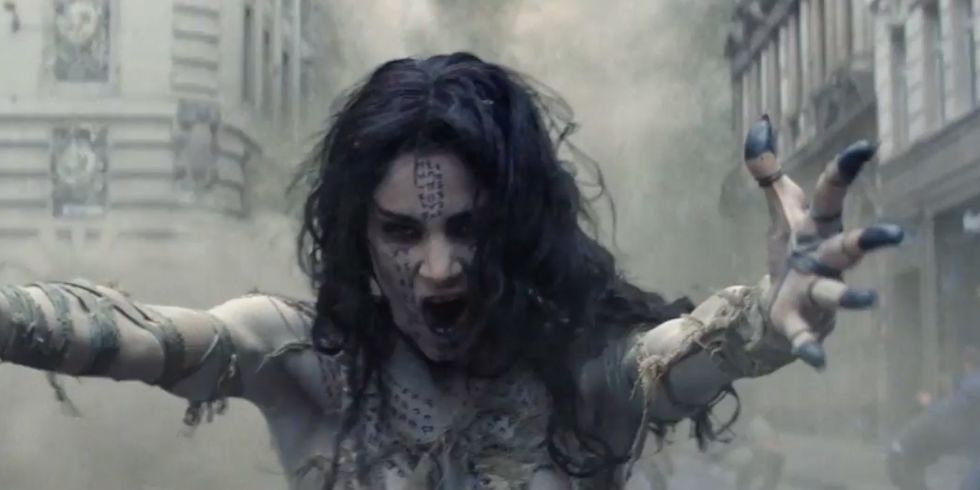
It’s quite sad when a Mummy film that stars the one and only Tom Cruise ends up being quite the dull affair. But, unfortunately, that was exactly the case with Universal’s new adaptation of their 1932 horror classic, The Mummy. It tried to be a combination of the horror elements of the original and the action-adventure vibe of the 1999 remake starring Brendan Fraser. Unfortunately, it didn’t really deliver on either of those aspects; it wasn’t that scary and while the action sequences are, at least, well-directed, they feel few and far between. And despite the best efforts of a talented ensemble cast that includes the likes of Cruise, Russell Crowe, and Sofia Boutella in the title role, they’re all stranded by a mediocre screenplay with subpar character development. And then there’s the whole thing about this film being the first installment of a new cinematic universe based around the Universal Monsters. It’s odd, though, because this film does so little to set-up this universe and yet still focuses on teasing future films so much that it ends up being a ‘set-up’ film first and a Mummy film second. Despite this mediocre start, though, I do think that this ‘Dark Universe’ could work because it’s technically been done before in some of the original Universal Monster films. I mean, Bill Condon is set to direct the next installment, Bride of Frankenstein, which he does have experience with because he directed a 1998 film, Gods and Monsters, that partially focused on the making of the 1935 horror classic. But as for The Mummy, while I don’t blame all its shortcomings on director Alex Kurtzman, this new franchise is admittedly off to a slow start.
WORTHWHILE RECOMMENDATIONS
THE ZOOKEEPER’S WIFE

In director Niki Caro’s newest film The Zookeeper’s Wife, based off the book of the same name by author Diane Ackerman, Jessica Chastain stars as Antonina Żabińska, who ran the Warsaw Zoo in Poland during the 1930’s with her husband, Jan (Johan Heldenbergh). However, most of the zoo ends up getting destroyed when the Nazis invade the country during World War II. Amidst the chaos of their war-torn city, the two decide to use their zoo as a place of refuge for several of the Jewish families who are being aggressively tortured by the Nazi regime. Caro’s direction is solid in this adaptation of a true story and Jessica Chastain does do a fantastic job in the lead role, as does Daniel Bruhl in the role of Nazi zoologist Lutz Heck, who Antonina has a tumultuous relationship with that’s often on the verge of being romantic. The only downside, though, is that I don’t think the film manages to fully capture the emotional depth that it wants to convey. Don’t get me wrong, it’s a powerful story about two people who risked it all to save several during one of the darkest times in history. However, it does feel like the film focuses more on its protagonists’ actions than the protagonists themselves. In fact, it could be argued that Antonina is sometimes overshadowed by her husband despite being the titular character of the story. Still, it’s hard to fault this film when its heart is clearly in the right place. Thus, while it may not end up being the award contender that it’s aiming to be, it still is a fascinating story of hope, one of several that came out of the horrors of World War II.
SPLIT

During the 2000’s, M. Night Shyamalan experienced one of the most brutal periods of ‘rock bottom’ that any filmmaker can go through. Many of his films (e.g. The Last Airbender, The Happening, etc.) were subjected to scathing reviews from critics and audiences, a far cry from his early successes with films like The Sixth Sense and Unbreakable. However, it seems like things are turning around for him recently thanks to hits like The Visit and this year’s Split, in which James McAvoy stars as a man named Kevin with 23 distinct mental identities. The story revolves around him kidnapping a trio of teenaged girls as he prepares to sacrifice them to his mysterious 24th identity known as ‘The Beast’. McAvoy truly is the star of the show in a well-layered and multi-faceted role, as he effectively switches in and out of his numerous identities with ease. Some of his most notable ‘identities’ include the 9-year old child Hedwig and the stern matriarch Patricia. Meanwhile, Anna Taylor-Joy is solid in the role of main protagonist Casey while Betty Buckley shines as well as Kevin’s psychologist Dr. Fletcher. And then, of course, there’s Shyamalan’s trademark twist ending. But while many of his more recent twists have gone down horribly with audiences (e.g. nature is responsible for the events in The Happening), this one I think will go over better. Why? Because through a closing cameo by Bruce Willis, it’s revealed that this film takes place in the same universe as Unbreakable. And while I haven’t seen that film yet, I probably will soon as Shyamalan is now preparing to do a third Unbreakable film, Glass, in 2019. Taylor-Joy and McAvoy will be returning from this film while Willis reprises his role of David Dunn once again. And, of course, Samuel L. Jackson will be returning from the original Unbreakable as that film’s main villain, Mr. Glass. Given Shyamalan’s recent track record, I bet that it’ll turn out to be another solid hit.
KONG: SKULL ISLAND

The most legendary ape in cinema, King Kong, returned this year in a brand-new film, Kong: Skull Island. This film is the second installment of Legendary Pictures’ planned Cinematic Universe (AKA the ‘MonsterVerse’) that also involves the version of Godzilla seen in the character’s 2014 reboot. Like that reboot, though, this new take on King Kong has proven to be rather polarizing as well. And to be fair, it’s understandable as to why this is, as Kong: Skull Island is a much different kind of beast compared to other blockbusters both visually and narratively. Plus, like Godzilla, there isn’t much in terms of character development for the human characters, despite some solid performances from the likes of Tom Hiddleston, Brie Larson, John Goodman, Samuel L. Jackson, and John C. Reilly. Though even with that said, Reilly does, in fact, get the most interesting subplot of the group given his character’s status as a WWII pilot who got stranded on Skull Island several decades prior to the time that this post-Vietnam set story begins. But unlike Godzilla, where the monster-based action sequences were mainly limited to the finale, this film doesn’t shy away from its monster action. Featuring the largest Kong yet in film, Kong: Skull Island benefits from an eye-popping visual style and great production design. Thus, overall, I did enjoy it despite its shortcomings. Plus, this is all leading up nicely to future films, including a sequel to Godzilla directed by Michael Dougherty in 2019 and the biggest one of the bunch, a Godzilla vs. Kong crossover in 2020 directed by Adam Wingard.
ALIEN: COVENANT

Speaking of polarizing releases, we have a similar situation with Alien: Covenant, the follow-up to 2012’s most polarizing release, Prometheus. This film claimed that it would answer some of the unexplained mysteries left by its predecessor, which was one of the biggest problems that critics had with Prometheus. Whether it does so is ultimately up to the viewer, but I will say that I did find Covenant to be another solid entry in this long-running franchise. Sure, it probably has one of the weaker overall stories of the franchise and it doesn’t really live up to its promise of returning to the series’ horror roots. That and the ending is rather lackluster because a lot of it is based around a blatantly obvious twist. Still, to its credit, the film’s ending is also a rather ballsy one given the ways in which it sets things up for the next installment. And, of course, just like the other Alien films directed by Ridley Scott, it benefits greatly from fantastic visuals and a terrific production design. As for the cast, the sheer amount of ‘main protagonists’ in this story does sometimes make it hard to keep track of them all, but the plotline of having them all tied together as couples does give some emotional depth to their death scenes. Michael Fassbender is terrific as always in the dual role of Prometheus´ android David, who’s still just as enigmatic as ever, and the new crew’s android, Walter. Meanwhile, Katherine Waterston immediately establishes herself as the most sympathetic member of the new crew, Daniels, after an opening in which she suffers a tragic loss. With all this in mind, Alien: Covenant may not be the best entry in the Alien series but it’s also far from being one of the worst.
PIRATES OF THE CARIBBEAN: DEAD MEN TELL NO TALES

And speaking of polarizing franchises, this year gave us another installment of Disney’s Pirates of the Caribbean franchise, a series that’s done far better commercially than it has done critically. And that overall streak continues yet again with the new installment, Dead Men Tell No Tales. However, as someone who has been a fan of this series and has liked all four of the previous films (yes, even the sequels), I found that I still liked this film about as much as I did the other films. Sure, there are times where the film slips into the same old flaws of its predecessors, like a messy narrative and scenes/characters that don’t really go anywhere (e.g. a truly random scene where Jack Sparrow and his crew are captured by an old associate of his who forces Jack into marrying his sister). But at the same time, directors Joachim Rønning and Espen Sandberg did do a solid enough job of keeping things generally fresh, especially with the addition of new main protagonists as well as some solid development for returning characters. Barbossa, especially, gets a major plot thread in this installment that surprisingly elicited some effective emotional results, though it’s mainly because of how big a part he’s played in this franchise. Johnny Depp, even amidst all his recent controversies, is still just as memorable as ever as Captain Jack Sparrow while Javier Bardem is a solid (albeit a bit underwhelming) adversary as the ghostly Captain Salazar. And, once again, I’ll admit that I wouldn’t mind seeing future installments of this franchise. After all, this film’s post-credit scene teases an interesting plot development revolving around the apparent revival of one of the series’ best characters. At the very least, I would like to see how this new development pans out.
CARS 3

Contrary to popular opinion, I really love the first Cars film from 2006. Was it one of Pixar’s absolute best? No, but it was still a charming little story with a heartfelt message about slowing down and appreciating the simpler things in life. Heck, I’ll even admit that I still like Cars 2, Pixar’s first critical dud. Again, it’s nowhere near the studio’s best work, namely due to a messy narrative, but it’s ultimately a harmless affair. Thankfully, with Cars 3, the filmmakers leaned more towards the spirit of the first film; it’s back to racing again and this time, the story of Lightning McQueen comes full circle. In Cars, he was the hot-shot rookie that eventually learned about his mentor Doc Hudson’s devastating crash that put him out of commission before he was ready to retire. This time around, Lightning finds himself in the same situation as he tries to outlast a new and advanced line of rookies who threaten to put an end to his career. Yes, like its predecessors, the story in this film is simple but at the same time, that doesn’t mean that there’s no emotional depth to it. Just look at this film’s terrific implementation of Doc Hudson, despite the character’s passing after the events of the first film due to his voice actor Paul Newman passing away in 2008. Then there’s also the great characterization for new protagonist Cruz Ramirez who, despite starting out as just Lightning’s new trainer, is shown to be very much capable of lasting alongside other racers on the racetrack. If this series ever does continue in the future, I wouldn’t mind seeing her return to become its new main protagonist. After all, to reiterate, this third Cars film did basically conclude the overall story arc for Lightning McQueen. No matter what happens, though, I’ll always argue that while Cars 3 may not be the best Pixar film ever made, it’s certainly more than just a ‘middle-of-the-road’ affair as some critics have been saying.
TRANSFORMERS: THE LAST KNIGHT

Yeah, I know… this is a questionable choice to put in the ‘Worthwhile Mentions’ category given that it’s one of the worst-reviewed films of the year and is yet another critical dud in the live-action Transformers series. But, for those who have been following this blog for a while, you’ll know that I’m one of the few people out there who does indeed like every entry in the series; yes, even the most critically despised ones like Revenge of the Fallen and Age of Extinction. The same can be said for The Last Knight. Now don’t get me wrong, this film isn’t even remotely flawless. For one thing, this was the first time where I genuinely got lost at times with the plot. They literally throw everything but the kitchen sink at you when it comes to conveying new ‘information’ about the Transformers. Plus, this time around it’s legitimately a Transformers film where the titular characters themselves are downplayed in favor of the human characters. So… why the heck did I still end up liking this film, you ask? Well, like always, its shortcomings in terms of the writing are [somewhat] saved by the consistently terrific visual effects. Plus, Michael Bay at least deserves some credit when it comes to crafting impressively staged action sequences. Though on that note, hopefully, this will be Bay’s last entry in the series, as he’s claimed, for two reasons. A.) Because it’s time for him to move on to other projects before he gets stuck doing these for the rest of his career and B.) so that new blood can be brought into this franchise to turn things around. I mean, who knows, maybe the upcoming spin-off starring the franchise’s best character, Bumblebee, could turn out fine. After all, it is set to be directed by Travis Knight, director of last year’s critically-acclaimed Kubo and the Two Strings. Only time will tell, though…
POWER RANGERS

This was one of the year’s most pleasant surprises for me. As I’ve noted in the past, I didn’t really grow up with the Power Rangers franchise despite being part of the generation that grew up with it. Still, I was genuinely interested in seeing this new big-budget film reboot of the franchise BECAUSE of its connections to my generation. And even as a casual fan of the franchise, I felt that this film was a solid new take on this iconic facet of 90’s pop culture. Granted, it isn’t perfect; like its source material, there are quite a few goofy moments in this. For one thing, this film has one of the most ludicrous bits of product placement in recent memory involving Krispy Kreme. Despite this, I was impressed by the film’s surprisingly effective handling of its plot. This is a true ‘origin story’, as we see the main characters grow and develop to become the Power Rangers. And when they do, it results in an awesome finale that respects the original Mighty Morphin series while still being its own thing. Sure, this means that the film doesn’t really get into any Power Rangers action until the very end, but unlike, say, Turbo: A Power Rangers Movie, where the Rangers did nothing until the finale despite having their powers, this film takes its time to develop the main characters. And this is what makes the finale incredibly satisfying because, at this point, we’ve become fully attached to this group of ‘misfits’, portrayed by an excellent group of young leads who work off each other incredibly well. In fact, they work so well together that I genuinely hope that they get to do a sequel. I mean, I know that the franchise’s future is in flux right now because this film didn’t do so well at the box-office, but come on! After that post-credits tag that teased the franchise’s most iconic character, Tommy Oliver AKA the Green Ranger, they deserve at least ONE sequel.
JOHN WICK: CHAPTER 2
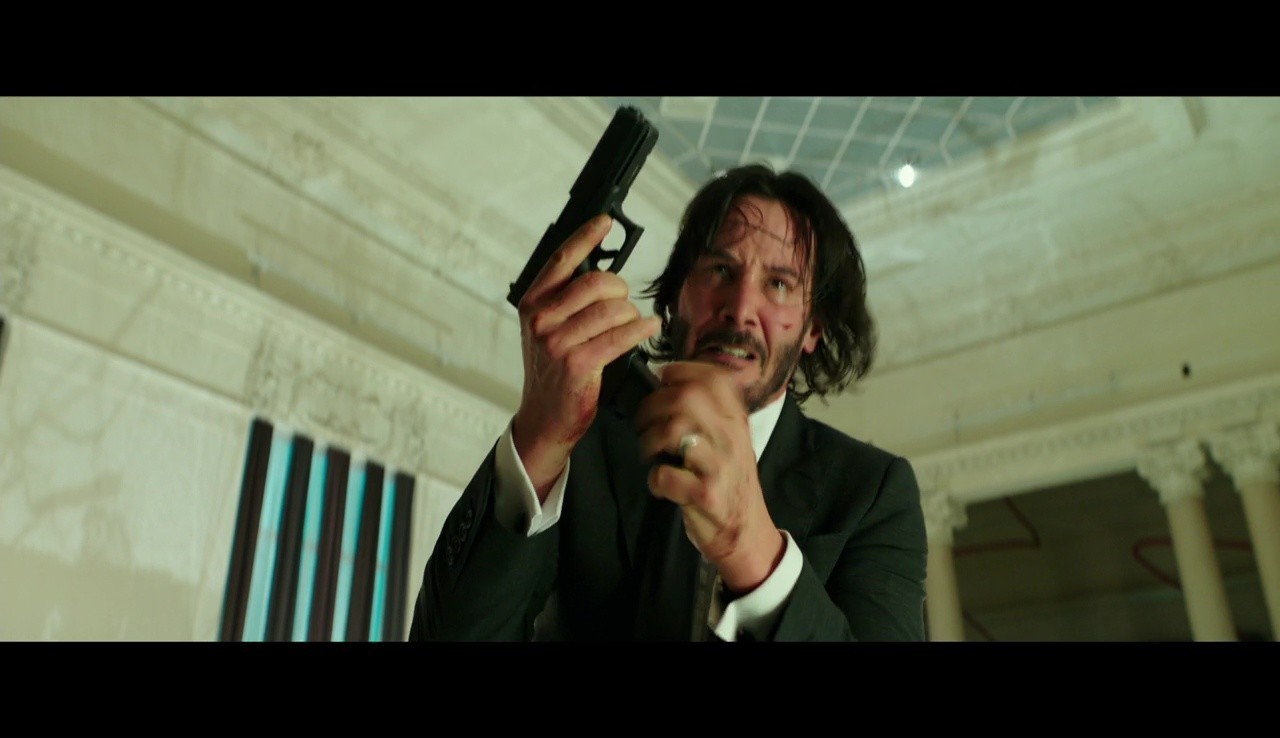
In 2014, Keanu Reeves’ career experienced a great bit of resurgence with the action thriller John Wick. Directed by former stuntmen Chad Stahelski and David Leitch, who had both worked with Reeves before on the Matrix films, the film featured some of the most stylish and all-around best action sequences in recent years. These were then packaged nicely with a simple but effective story of a legendary hitman who’s out to avenge the death of his dog against those who attacked him. And while it’s only Stahelski behind the camera this time around due to Leitch moving on to other projects (i.e. Atomic Blonde and Deadpool 2), John Wick: Chapter 2 is yet another fantastic and action-packed thrill ride. Keanu Reeves is great once again as the calm and collected badass John Wick, while also being backed by a highly memorable supporting cast that includes the likes of Common, Ian McShane, and Laurence Fishburne. But, of course, the true stars of the show are the action sequences and, once again, they’re excellently choreographed and filmed. Plus, the film ends on an awesome note that sets the stage for what will surely be an epic third installment, in which good ol’ ‘Baba Yaga’ will find himself facing down incredible odds without the help of the hitman community. And that’s because he broke the one rule that a hitman knows never to break; never commit one’s business in the Continental Hotel. With all this in mind, I will, in fact, argue that John Wick: Chapter 2 is one of the rare ‘superior sequels’ to an equally fantastic predecessor. It has a larger scale compared to the first film, as is the case with most sequels, but it still manages to maintain the simplistic but badass nature of the world that it creates.
THE FATE OF THE FURIOUS

We’re now at the eighth installment of this absolute monster of a film franchise. And at this point, you’re either fully invested in it… or you despise it with a burning passion for being so popular despite it getting more ridiculous and goofy with each new film. And yet, that’s precisely what makes these films so damn fun; at this point in the game, they know exactly what kind of series they’re trying to be. And I won’t lie… this new one may have become my new favorite entry in the series. While many of us may have joked at how the film would handle its main plotline of main protagonist Dominic Toretto going rogue against his team, the reveal is surprisingly well-handled. If anything, it ties in perfectly with the franchise’s recurring theme of ‘family’… despite all the behind-the-scenes controversy that happened during this entry of the series. Of course, there was the ‘clearly not staged’ feud between Vin Diesel and Dwayne ‘The Rock’ Johnson, but now it’s being reported that Michelle Rodriguez may leave the franchise if they don’t start giving its female characters larger roles (which, to be fair, she’s right…). Well, no matter what happens after this, one thing is for certain; the cast still works great together on-screen. Jason Statham is thankfully given a larger role this time around and while Charlize Theron spends most of the film away from the action, she manages to be one of the series’ best villains through her effective manipulation of Dom. In conclusion, though, to reiterate a point that I made in my original review, if you scoff at the sight of The Rock pushing away a torpedo with his bare hands, then this film isn’t for you. But if you’re one of this series’ long-time fans, then I’m sure that you’ll love this new entry just fine.
THE LEGO BATMAN MOVIE

After Warner Bros. scored a big hit in animation with 2014’s The LEGO Movie, they continued their new line of animated LEGO films with yet another smash-hit, The LEGO Batman Movie. Of course, as the title suggests, it focuses on the character that many felt was the standout of the original LEGO Movie; LEGO Batman. And Will Arnett once again does a phenomenal job as this hilarious interpretation of the classic superhero. But this time around, he’s also given a great story arc in which he learns to finally accept people into his life again after years of isolation. This comes to fruition through his ‘unintentional’ adoption of a young ward, Dick Grayson, his sometimes-tumultuous partnership with Gotham’s new police commissioner, Barbara Gordon, and even his ‘hero-villain’ relationship with his greatest nemesis, the Joker. And because of this, the film very much delivers on having a strong emotional depth, just like its predecessor. Meanwhile, the animation in this is just as excellent as it was in the original LEGO Movie. It really is impressive how the animators managed to inject a stop-motion feel (the animation style commonly seen in fan-made LEGO films) into a computer animated film. And, of course, being a Batman film, The LEGO Batman Movie is full to the brim with references to DC Comics and the character’s long, long, long history (“I have aged phenomenally!”). Thus, The LEGO Batman Movie is a fantastic follow-up to its equally fantastic predecessor. Simply put, to quote the predecessor’s iconic song, ‘everything is awesome’ right now with Warner Bros.’ LEGO franchise.
BABY DRIVER

It’s good to see that Edgar Wright has managed to come back after his tumultuous exit from Marvel Studios’ Ant-Man. Clearly, both sides have moved on from that problematic ordeal; Marvel Studios continues to dominate the superhero genre (as we’ll see in a bit) and Wright has another stylishly entertaining film for us with Baby Driver. Influenced by a music video that he directed for the band Mint Royale in 2003, Baby Driver focuses on a young and generally innocent getaway driver for a local kingpin who constantly listens to music. This allows him to both drown out the hum in his ears following a traumatic incident from his past and to be the best getaway driver in the business. And that is very much apparent thanks to the film’s exceptional car chase sequences, all of which were done practically and are excellently shot and edited. But the real star of the show is the film’s soundtrack. Not only does the film feature a rocking soundtrack full of classics but Wright also manages to seamlessly tie them into every action that happens on-screen, from a shoot-out set to ‘Tequila’ to a scene where Baby takes the time and effort to restart a song so that he’s in the proper mindset. And it’s all backed by an excellent ensemble cast, which includes the likes of Ansel Elgort as the film’s charismatic lead, Kevin Spacey being the Kevin Spacey we all know and love, and a great collection of supporting characters played by, including but not limited to, Jon Hamm and Jamie Foxx. Thus, if you’re a big fan of Wright’s previous work, including the legendary Cornetto trilogy, then I bet that you’ll love his latest directorial effort just as much. It truly is fantastic.
AND NOW, MY TOP 5 OF THE YEAR (SO FAR)
Spoilers… almost all these are superhero films! So much for that superhero fatigue, eh?
5. CAPTAIN UNDERPANTS: THE FIRST EPIC MOVIE

Yes, a film adaptation of a popular children’s book series that has been around for two decades has turned out to be one of my favorite films so far in 2017. The main reason why is because it managed to be one of the most faithful adaptations of any given source material that I’ve seen in recent memory. Director David Soren and screenwriter Nicholas Stoller (AKA the director of comedy hits like Forgetting Sarah Marshall and Neighbors, along with co-writing the screenplay for the two most recent Muppets films) perfectly capture the crude but charming style of Dav Pilkey’s best-selling series, right down to the on-screen implementation of its iconic running gags. Seriously, I damn-near cheered when they brought in the classic ‘Flip-O-Rama’ segment from the books. But amidst all the toilet humor (figuratively and literally as there are, in fact, sentient toilets in this), this film genuinely has some heart to it. This is mainly represented by the terrific friendship between main protagonists George Beard and Harold Hutchins, who are excellently voiced by Kevin Hart and Thomas Middleditch, respectively. Meanwhile, Ed Helms is a great pick for the dual role of Mr. Krupp AKA Captain Underpants as is Nick Kroll as the film’s main villain, Professor Poopypants. Really, I can’t say much more about this film except for that I really felt like a kid again while watching it because I used to read these books all the time when I was growing up. And even though it’s been years since I’ve read any of them, the kid in me was very much satisfied with this adaptation. TRA LA LA!!!!
4. LOGAN

After 17 years in the role of Wolverine, Hugh Jackman ended his run as one of the best casting choices in the history of the superhero genre on the best note possible. With Logan, Jackman and director James Mangold managed to give the iconic hero the film adaptation that his fans have long wanted to see; a brutal, no-holds-barred, and all-around gory R-rated superhero film. They almost got that with 2013’s The Wolverine, but Jackman and Mangold were forced to cut that film down so that it would be PG-13. Thankfully, an uncensored cut was released on Blu-Ray and it was, obviously, the superior version of that film. But as for Logan, nothing is toned down here; these fights are so brutal that they’re very much capable of eliciting visceral reactions from the audience. But even amidst all the awesome action sequences, the film also does a great job in concluding Logan’s story. Part of this is through the introduction of a young girl named Laura, AKA Wolverine clone X-23. Newcomer Dafne Keen straight up steals the show while Jackman and Patrick Stewart give arguably their greatest performances in the roles of Logan and Xavier AKA Professor X, respectively. Save for a few underdeveloped villains, this film is an incredibly well-layered story that also serves as the final curtain call for the X-Men of the original film series. Of course, the cast of the franchise’s First Class era lead the show now and will do so again next year in X-Men: Dark Phoenix. But as for Logan, not only is it the best Wolverine solo film to date (though some may say that this isn’t saying much), but it’s also one of the best entries in the entire X-Men franchise. And it achieves this with a story that, as we expected, really hit us on an emotional level.
3. WONDER WOMAN
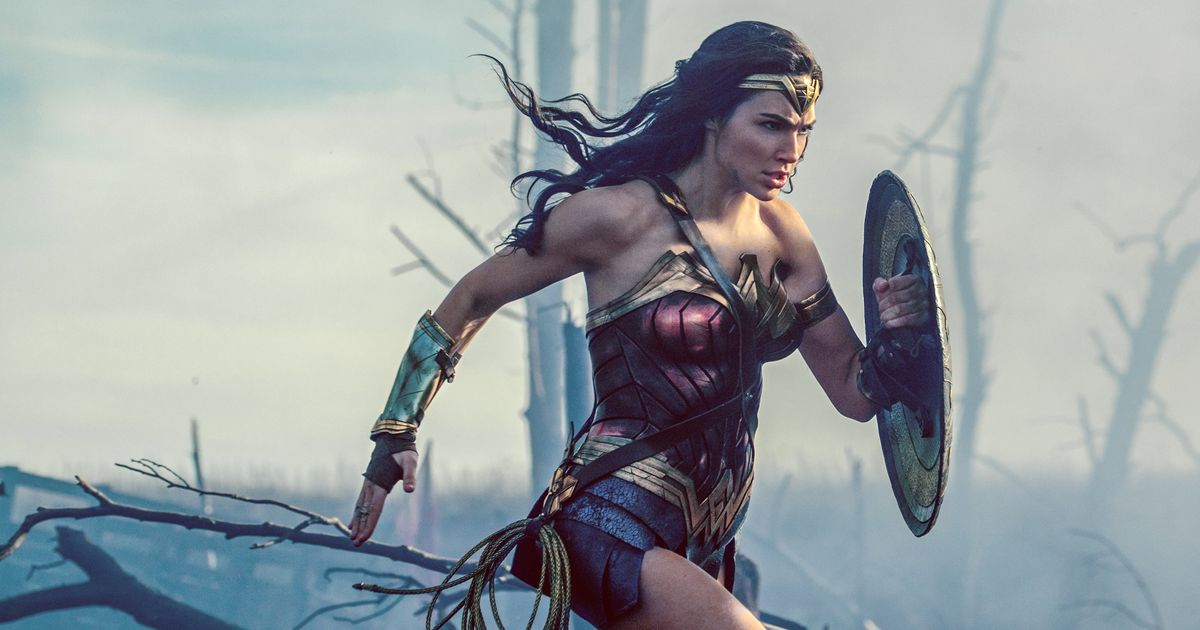
After suffering tons of critical backlash in 2016 with Batman v. Superman: Dawn of Justice and Suicide Squad, Warner Bros. and DC finally managed to catch a lucky break this year with the fourth installment of the DC Extended Universe, Wonder Woman. Director Patty Jenkins did a phenomenal job in bringing the beloved member of DC’s Trinity to the big-screen in her long-awaited solo film after initially debuting in BvS. And, of course, Gal Gadot did an equally phenomenal job in the role of the iconic heroine, very much proving her critics wrong thanks in part to a terrific character arc in which the initially naïve Amazonian princess soon learns about the harsh reality that is the darker side of humanity. But even though the film is primarily set during World War I, that doesn’t mean that it forgets to be a fun and light-hearted superhero film that ties in perfectly with Wonder Woman’s characterization, complete with epic action sequences and an equally terrific supporting cast to back Gadot up. Chris Pine is a great foil to Gadot as Diana’s love interest Steve Trevor, never once overshadowing her while still being more than just a typical love interest. Meanwhile, the two are joined by a highly memorable group of supporting characters in the form of their fellow team members (Sameer, Charlie, and Chief), while both Connie Nielsen and Robin Wright give great, dignified performances as Diana’s mother Hippolyta and aunt Antiope, respectively. And while I do think that the villains are ultimately some of the weaker elements of the film, that doesn’t take away from everything else that’s great about it. In short, Wonder Woman is one of the most satisfying entries in the superhero genre and a much-deserved win for all who were involved.
2. BEAUTY AND THE BEAST

Sure, maybe this entry in Disney’s continuing line of live-action remakes was a questionable one given that the original Beauty and the Beast is one of the studio’s most beloved animated efforts. And sure, at the end of the day, it’s mostly just the same plot as its predecessor, making its overall status even more questionable in the minds of those who aren’t fans of remakes. But even with all this in mind, and ignoring the completely overblown and 100% stupid controversy revolving around the announcement that the film would feature Disney’s first ‘exclusively gay’ moment (a moment which, may I add, is so subtle that some may not have even noticed it if it hadn’t been pointed out by the media beforehand), at the end of the day this is just a highly satisfying ‘feel-good’ film. It respects the original film while also doing just enough to be its own thing, even if it is admittedly the same general narrative. Still, the changes to the narrative are subtly executed without ever betraying the heart of this classic story of embracing people for who they are on the inside. And if that wasn’t enough, the film is visually spectacular with terrific visual effects and a great production/costume design. It also boasts a terrific ensemble cast highlighted by Emma Watson as Belle (P.S. Contrary to popular opinion, I thought that she was perfectly fine in terms of her singing), Dan Stevens as the Beast, Luke Evans as Gaston, Josh Gad as LeFou, and an awesome supporting ensemble to fill the beloved roles of the Beast’s servants, from Ewan McGregor to Ian McKellen to Gugu Mbatha-Raw to Emma Thompson. And of course, who can forget the classic songs from Disney icons Alan Menken and the late Howard Ashman, plus a few new songs as well that are great additions to this ‘tale as old as time’ (I especially love the Beast’s new solo, ‘Evermore’). In conclusion, no, I don’t think that this was better than the original; that was a tough act to follow, after all. But even though the original Beauty and the Beast is one of my Top 5 favorite Disney animated films of all-time, that doesn’t mean that I was going to be judgmental towards this new take on the story because of it.
1. GUARDIANS OF THE GALAXY VOL. 2

Now when I first reviewed this film, I noted that I felt that there were some instances where, to quote the common argument seen in almost EVERY SINGLE DAMN REVIEW for the film, ‘it wasn’t as good as the original Guardians of the Galaxy’. However, as I thought about it more, I realized that, contrary to popular opinion, Guardians of the Galaxy Vol. 2 IS better than the first film. Don’t get me wrong, I still adore the original Guardians for its successful efforts in making us care for a group of characters who were once viewed as a ‘C-list’ superhero team in the comics. However, writer/director James Gunn manages to take the strong emotional depth of the original one step further with the sequel thanks to a poignant story based on the theme of fatherhood. And while some may question the decision to have the Guardians be split up into pairs of two for most of the film, it ultimately works because each pairing (e.g. Drax and Mantis, Yondu and Rocket/Groot, etc.) is a perfect match. This all leads to what is arguably the most emotional moment in any Marvel Cinematic Universe film to date, which is backed by the scene’s excellent score by Tyler Bates (i.e. the track ‘Dad’) and is then followed by the perfect use of Cat Stevens’ song ‘Father and Son’ in the subsequent scene. And just like the original, the main characters are all lovable and portrayed by an excellent ensemble cast, the film boasts gorgeous visuals, and it’s all backed by the kick-ass tunes of Awesome Mix Vol. 2. Simply put, I adored Guardians of the Galaxy Vol. 2, and because I do think it’s better than the original, that effectively makes it my new favorite entry in the Marvel Cinematic Universe. And bear in mind that at the time that I’m writing this, I’ve only seen it once. That, my friends, is saying a lot!
And those are all the films that I’ve seen so far in 2017. Thanks for following along and be sure to sound off in the comments below with your own personal Top 5 of the year so far.
